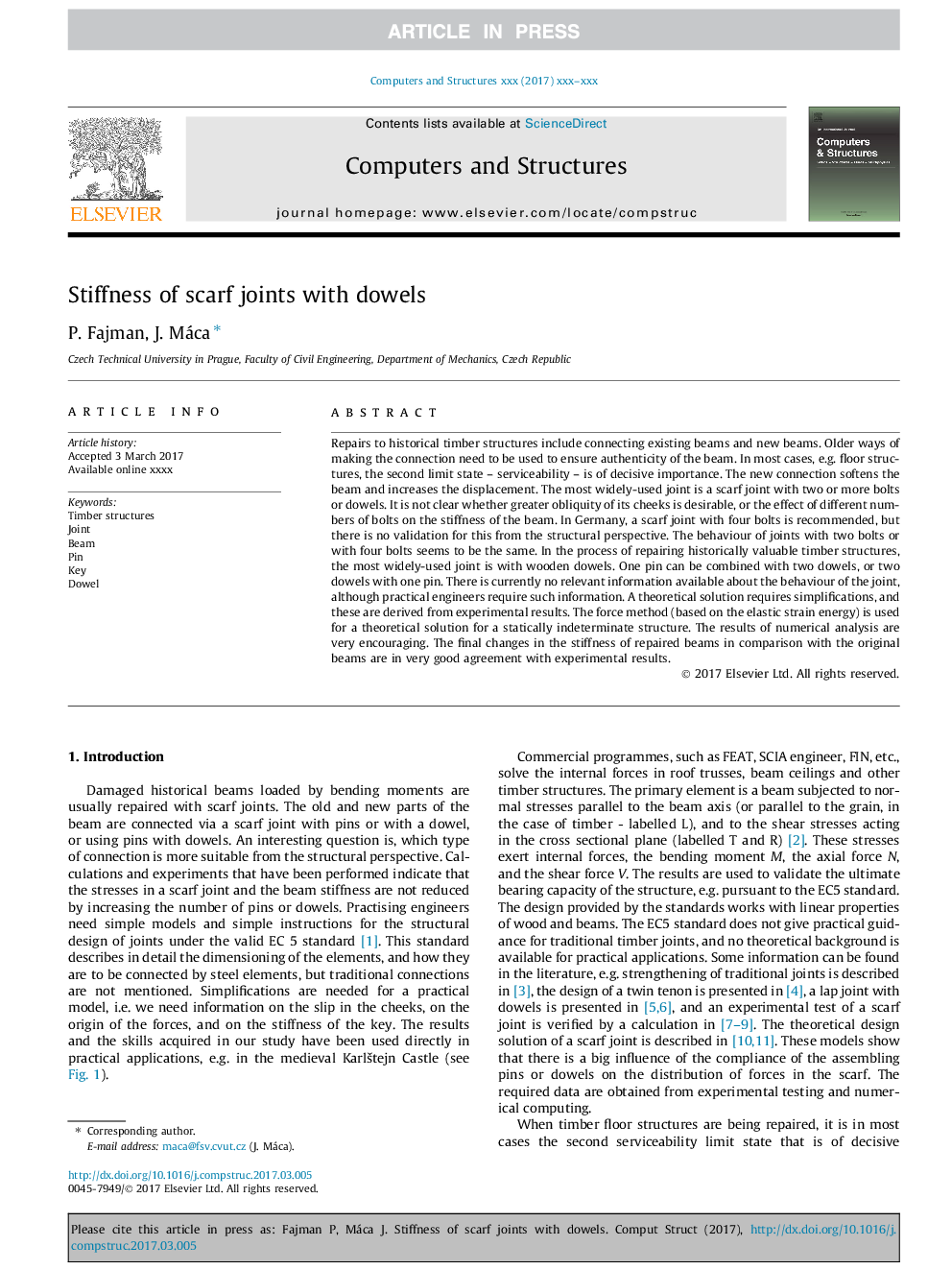| Article ID | Journal | Published Year | Pages | File Type |
|---|---|---|---|---|
| 10225979 | Computers & Structures | 2018 | 6 Pages |
Abstract
Repairs to historical timber structures include connecting existing beams and new beams. Older ways of making the connection need to be used to ensure authenticity of the beam. In most cases, e.g. floor structures, the second limit state - serviceability - is of decisive importance. The new connection softens the beam and increases the displacement. The most widely-used joint is a scarf joint with two or more bolts or dowels. It is not clear whether greater obliquity of its cheeks is desirable, or the effect of different numbers of bolts on the stiffness of the beam. In Germany, a scarf joint with four bolts is recommended, but there is no validation for this from the structural perspective. The behaviour of joints with two bolts or with four bolts seems to be the same. In the process of repairing historically valuable timber structures, the most widely-used joint is with wooden dowels. One pin can be combined with two dowels, or two dowels with one pin. There is currently no relevant information available about the behaviour of the joint, although practical engineers require such information. A theoretical solution requires simplifications, and these are derived from experimental results. The force method (based on the elastic strain energy) is used for a theoretical solution for a statically indeterminate structure. The results of numerical analysis are very encouraging. The final changes in the stiffness of repaired beams in comparison with the original beams are in very good agreement with experimental results.
Related Topics
Physical Sciences and Engineering
Computer Science
Computer Science Applications
Authors
P. Fajman, J. Máca,
